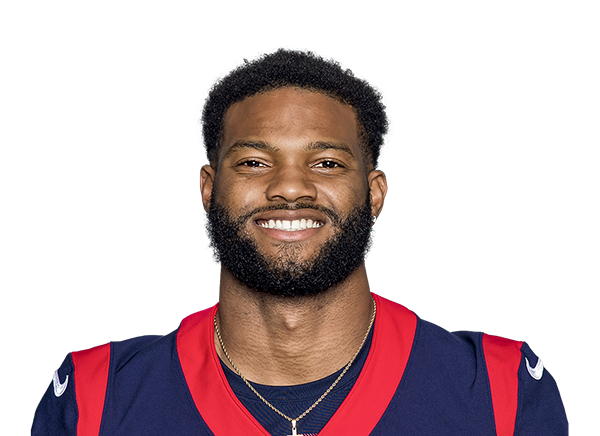April Dynasty ADP Risers and Fallers: Running Backs

This series acknowledges ADP swings from one year ago, April 2022 to our recent ADP update. I will look at ADP changes for each position with this article focusing on running backs. The 1QB mock drafts happened before the 2023 NFL Draft. I will talk about risers and fallers, and any notable selection(s) within. Let’s jump right into it.
Running Backs
These mock drafts are the initial data we have following the free agency period, and any other reports to have happened since last month’s articles. Below is a visual representation of where the running backs are being drafted.
The dynasty landscape has shifted on how drafts are handled. Running back positions are not a priority during start up drafts. In 2022 we saw eight running backs selected in the third round. One year later, we are seeing five less. Here is how one year changes where running backs are being drafted:
Notable Selections
These running backs are specific selections I wanted to note separately from their riser or faller category. It should be expected for young running backs or end-of-the-first-contract running backs to be risers.
Rhamondre Stevenson, NE – RB11 (+60.5)
New England hired Bill O’Brien to be their offensive coordinator for the 2023 season. He is a familiar face with the team and his history tells us he favors a running back committee. This does not bode well for the production outlook for Stevenson, at least outside of scoring touchdowns.
In 2022, the New England depth chart was depleted with injuries while Stevenson remained healthy for the season. He saw 298 opportunities and made the most of them to finish as the RB7 in PPR scoring (69 receptions). Nice, but I am worried we will not see a similar workload for the 2023 season. The NFL Draft will be important to note regarding an investment at the running back position.
Tyler Allgeier, ATL – RB36 (+61.8)
Atlanta committed to the run game and their fifth round rookie provided a terrific season with 1,174 scrimmage yards. Allgeier does not have receiving upside (16 receptions), but is able to be the pound-and-run back within the offense.
I see a lot of comparisons to the New York Jets and Michael Carter for Allgeier. We saw Carter have a solid rookie season and then draft Breece Hall the following year. This likely creates uncertainty for drafters and is why he is going at RB36, despite a 1,000+ yard rookie season. I understand the comparison but do not agree. Allgeier was an efficient running back, being ninth in rushing yards of expectation, while Carter seemed destined to be a complimentary piece – who could not take a lead role following Hall’s season-ending injury in 2022.
Atlanta is reportedly committed to Desmond Ridder being their starter, which likely means they will stay committed to their run game which had the most carries last season. Hypothetically, if they do invest an early pick at the position, Allgeier will still have a role.
Running Back Risers
In dynasty it is often easy to understand why a running back will rise in ADP. This could be due to a lead back in a high-powered offense or a rookie running back proving their ability despite concerns heading into the season. This could be due to a young running back who likely retains a viable role in an offense.
Tony Pollard, DAL – RB16 (+39.3)
Dallas released veteran running back Ezekiel Elliott leaving Pollard to rise to the top. Pollard has been an efficient running back and the 2022 season left Dallas with an easy choice of who to retain as their RB1, especially when considering the monetary value. However, Pollard only received the franchise tag and will be turning 26 at the end of the month. Drafters should know Dallas likely will add to the shallow depth at the position.
This does not mean Pollard will not receive 200+ touches in 2023 or re-sign a deal for the future. We know he is talented and his current fifth round selection (53.17) is not a premier investment.
Rachaad White, TB – RB20 (+40.7)
Similar to Pollard, White found himself at the top of the depth chart following the release of Leonard Fournette. White only managed 771 scrimmage yards in 17 games. The intriguing aspect was his receiving upside with 50 receptions. Drafters may assume White will take on Fournette’s role and hoover around 250 touches for the season, with the receiving upside.
Dameon Pierce, HOU – RB23 (+79.5)
In his rookie season, Pierce put up 1,104 scrimmage yards in only 13 games. Houston is clearly rebuilding and may not necessarily need to invest early at the running back position. Pierce was a fourth round selection, which means following the 2023 season he will have two years left on his contract.
Additional Risers
James Cook, BUF – RB30 (+41.5)
Buffalo signed Damien Harris but is not a receiving threat. Cook is likely in for an intriguing pass-catching role. Devin Singletary had three straight 50 target seasons.
Khalil Herbert, CHI – RB34 (+49.8)
Chicago did have a run-first offense in 2022. Herbert likely has a role cemented in the offense regardless of the D’Onta Foreman signing and if they pass more.
Kenneth Gainwell, PHI – RB44 (+22.8)
Philadelphia let Miles Sanders walk. This leaves an opening on the depth chart to claim the starting role. The 2023 NFL Draft will be important to note. Philadelphia did sign Rashaad Penny, albeit in a deal worth $1.35 million with only $600,000 in guaranteed money.
Running Back Fallers
Similarly to running back risers, it is often easy to understand why a running back will fall in ADP. I do not want to bore you with obvious selections like Ezekiel Elliott or Leonard Fournette. We know they are aging players at the tail end of their careers.
D’Andre Swift, DET – RB14 (-40.0)
It took one year for Swift to fall from a first round pick to an early fourth round pick. This happened after Detroit signed David Montgomery to a three-year deal. Simultaneously, Swift had a disappointing 2022 season while battling injuries. Your league scoring likely is contingent on a running back like Swift. Meaning, he will be beneficial in PPR scoring as he has had no less than 40 receptions a season, while averaging 13.3 games played.
Javonte Williams, DEN – RB15 (-44.8)
Following a devastating knee injury, Williams fell out of the first round of drafts to a fourth round selection. The combination of the injury and drafters prioritizing other positions likely explains this fall. We know the talent is there, we just are unsure how Williams will play for the 2023 season. Comparisons to JK Dobbins linger as it took him until Week 14 of the 2022 season following his ACL injury to come to full strength.
Additional Fallers
JK Dobbins, BAL – RB19 (-34.0)
Baltimore may not have Lamar Jackson under center. This may mean defenses can stack the box against Dobbins.
Damien Harris, BUF – RB50 (-48.8)
May find a short-yardage role with touchdown upside. Hard to bet on when the touchdowns will happen.
Devin Singletary, HOU – RB58 (-73.5)
Finds himself behind Dameon Pierce on the depth chart. May be given touches to help lighten Pierce’s workload.
Discussion
Running backs are an interesting piece of the dynasty puzzle. When looking at the NFL systems, teams will often utilize multiple running backs. There may be a pass-catching running back and a bruiser, the guy getting the short yardage. Jamaal Williams had 14 touchdowns inside the five yard line in 2022. His teammate, D’andre Swift, had 48 receptions. There are roles to be desired.
Age is another indication of how drafters view running backs. So long as the running back has a limited injury history and is talented, of course. These variables will be needed to address the system the running back is in. Williams finished as RB13 in PPR scoring despite having 12 receptions. His 17 rushing touchdowns boosted his scoring. His red zone usage should be desired. Subsequently, Swift’s receiving usage is desired but his health is in question, playing only 80% of his career games.
The position is viewed to have a shorter shelf-life. This may explain why we are seeing running backs fall in drafts. This does not mean you will not get production from the running backs. Drafters may prefer to lock down their wide receiver or tight end room first.
Dynasty Implications
This article covers startup ADP. Running backs made up 25% of the first round selections. Remember, the mock drafts covered 1QB leagues. I will bring back the chart from the beginning.
Running backs are being drafted to fill teams, or so it seems. Rounds 5-9 are seeing the majority of running backs being selected. This is where you will find aging running backs like Derrick Henry (58.7). This is where you find the middle-aged running backs who are their team’s starter like Miles Sanders (73.7). This is where you find rookies who have no draft capital or team situation because the NFL Draft has yet to happen like Zach Charbonnet (58.0).
Regardless of the reasoning, running backs are being drafted later. Wide receivers and tight ends are taking their drafted position. When you think about this, it really does not matter where players are going. They are essentially swapping places, which hypothetically means you can still draft the same team, just at different rounds. If this does not make sense to you, I was trying to say something like this: D’Andre Swift is currently going where Drake London was going last year. Conversely, London is currently going where Swift was going last year.
.
Well, not exactly, but I think you get the idea I am attempting to explain. It is not necessarily a bad thing running backs are currently being drafted where young wide receivers were previously being drafted. This is a shift in dynasty that is happening and likely has officially happened. If a running back is declining in efficiency and is aging, you do have a great reason to fade them during a dynasty start up. If a running back is 25 years old, you do not have a great reason to fade them during a dynasty start up.
- Todd Gurley declined due to arthritis in his knee, not because he was “aging”.
- Ezekiel Elliott received volume but lacked efficiency.
- LaDanian Tomlinson averaged 326.6 rushing attempts, 1,439.2 yards, and 17.8 touches from his age 25-29 seasons.
There may be a time in the future when we see talented running backs being left in the middle-to-late rounds because of the concern surrounding how many years you will get out of the player. We should be concerned with how many points we will get out of the player, too. Remember, the goal is to win championships, not just build a young team.
- May Dynasty ADP Risers and Fallers: Tight Ends - May 31, 2023
- May Dynasty ADP Risers and Fallers: Wide Receivers - May 30, 2023
- May Dynasty ADP Risers and Fallers: Running Backs - May 29, 2023



























































